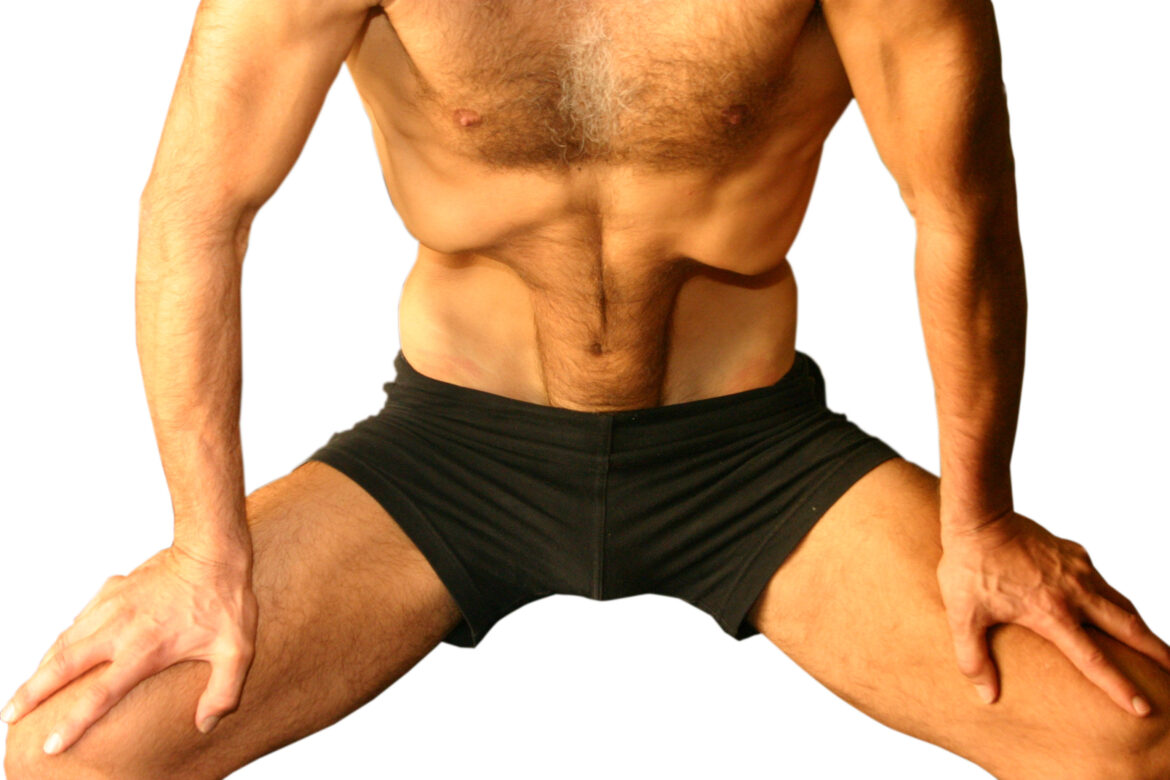
NAULI
- March 8, 2021
- Posted by Dr. Vaidya Karanvir Singh
- 0 Comment(s)
(Abdominal massaging)
Nauli is one the shatakarma practice of contracting and isolating the rectus abdomini muscles. According to Gherand Samhita it is known as lauliki.The root word ‘nala’ means the navel string i.e. rectus abdomini muscles and it also means a tubular vessel.Lauliki word comes from word ‘lola’ which means ‘to roll’ or ‘agitate’.
When the rectus abdomini muscles are rotated from right to left (clockwise), that is called vama nauli.When they are rotated from left to right (anticlockwise), it is called dakshina nauli.When the muscles are pulled together and the middle group of muscles protrude, it is called madhyama nauli.Before attempting nauli you must be able to perform uddiyna bandha correctly.
The rectus abdomini muscles are the two elongated vertical muscles situated in the anterior aspect of the abdomen, which run from under the mid of the rib cage near the diaphragm to the pubic bone. The muscles you are manipulating in nauli kriya are the external oblique and the transverse abdomini muscles as well.
At first nauli is practiced with the hands just above the knees, and the body bent forward. Once this is perfected you can practice in a more upright position and hands placed on the upper thighs.
Table of Contents
Stage 1. Vama and Dakshina Nauli (left and right isolation)
Stand with the feet 45 to 60 centimeters apart.
Bend the knees and rest the palms just above the knees, thumbs on the medial aspect of the thighs, fingers touching the outsides, or as shown in picture.
Keep the head up and the eyes open.
Breathe in deeply and intensely through the nose and exhale quickly through the mouth, slightly pursuing the lips.
Perform Jalandhar bandha while maintaining bahiranga (external) kumbhaka.
Suck the abdomen and stomach in by performing uddiyana bandha.
Lift the right hand slightly off the knee, keeping all the pressure on the left hand and knee ,but do not lean to the left side .This will automatically isolate the rectus abdomini muscles on the left. Then release uddiyana bandha, elevate the head slowly, stand up and inhale gently .This is vama nauli. Practice in the same way on the right side as well.
Keep the right hand resting above the knee and slightly lift the left hand to segregate the rectus abdomini muscles on the right .This is dakshina nauli.
In between each round of nauli, release uddiyan first, then Jalandhar, elevate the head, stand upright and then breathe in very slowly through the nose. Take a few normal breaths before performing the next round.
Stage2. Madhyama nauli (central abdominal contraction)
Start to rotate the muscles to the other side, but before they reach the opposite side hold them in the middle of the abdomen. In order to rotate the muscles, slowly bring the weight back on to the hands which was lifted from the knee. While holding the muscles in the middle, both hands should rest above the knees.
This is madhyama nauli.
Stage3.
Practice in the same way as stages 1 and 2 but learn to control the contraction of the muscles and to segregate the muscle groups without lifting the hands from the legs. First try by just releasing the pressure off the hand without shifting it from the leg.
Gradually begin to control the practice so that the hands remain fixed on the legs .Then practice with the hands on the upper thighs.
Stage 4. Abdominal rotation or churning
Stand in the same position as in stage 1, keeping the hands on the legs above the knees throughout the entire practice.
Practice vama nauli and then rotate the muscles to the right and back to the left. Continue rolling the muscles in a clockwise direction. This is known as ‘churning’. Start by practicing it three times in sequence, then release. Practice dakshin and vama nauli in the same way. When this is perfected you can escalate up to 10 rotations, then 20 rotations.
Stage5.
Practice stages 1 and 2 sitting in siddhasana/siddha yoniasana with the buttocks uplifted slightly by a cushion.Initially it may be tough to control the muscles in the sitting position, so it is better to first perfect the practice of nauli in the standing or upright position.
Benefits:
Nauli is foremost of the hatha yoga practices. It kindles the digestive fire, removing indigestion, sluggish, digestion, and all the disorders of the doshas, and brings about happiness.
Nauli is especially useful for alleviating indigestion, constipation, acidity, flatulence, diarrhea, depression, hormonal imbalances, sexual and urinary disorder, and lack of energy, dullness, laziness and emotional disturbances. Through this practice one can control appetite and strengthen one’s willpower. This practice also helps in controlling sexual desires. If this can be attained, the practitioner will definitely find deeper satisfaction within.
Contra-indication:
Nauli cannot be practiced by everyone .Those people who are suffering from heart disease, hypertension , duodenal ulcer, gastric ulcer, hernia, post-operative cases of abdominal surgery; or who are recovering from internal injuries ,cannot practice it.

Dr. Vaidya Karanvir Singh is the younger Vaidya in Chandigarh Ayurved & Panchakarma Centre. He is the fourth generation in his family who is practicing as a general consultant in Ayurved & Panchakarma treatment at Chandigarh. In his practice, he had treated more than 1 Lakh Plus patients worldwide.


